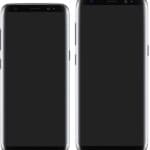June 2017 brought two new tablets to the market. Microsoft launched their 2017 Surface Pro and Apple came to the table with a redesigned iPad Pro, but are either hitting the mark for what consumers are really looking for? Let’s take a look.
Apple 10.5-inch iPad Pro
The increased screen size of the iPad has brought 20% more screen space without adding significant bulk or weight since the debut of the first iPad in 2010. That larger screen means that the device is more versatile for users. Not only do videos look better, but it makes documents easier to read and a larger keyboard helps those who have struggled to use the on-screen keyboard.
However, not everything is all about size, the iPad Pro has seen the addition of quad speakers that deliver better sound, a faster processor and more RAM that come with even the cheapest base model. While the iPad still can’t compete with the power of a laptop or desktop, we are really seeing an improvement in productivity and a move towards more functionality. By far Apple provides the best true tablet experience on the market currently.
2017 Surface Pro
Unlike the iPad, the Surface Pro is still trying to bridge the gap between the tablet and the laptop, by providing many features that a laptop user would be looking for, but in a simpler package.
The extras available for the Surface such as the trackpad-equipped Type Cover Keyboard turn your convenient and transportable tablet into a solid working machine instantly. The big advantage in the productivity column is that the Surface Pro runs Windows 10 and simply had better capability to handle serious work when compared to the iPad.
So what’s the tablet problem?
After hearing the pros about the two biggest tablets on the market you might be questioning exactly what the problem is. Well, their products might actually be too good to replace. High-quality products are something that consumers desire, but without huge advancements in technology, consumers are content to keep their old devices.
For the world of tablets the problem could be that no company has truly created a product that becomes a user’s only device. Those who own tablets often use them as a secondary device and still rely heavily on their laptops and desktops.
The other issue is that advancements in competing devices have decreased the desire for the tablet. Many people find that using their phones is acceptable for on the go work, and portable laptops fit the bill for bigger projects. It could be that tablets have lost their place in the technology market, and are simply not desirable to enough users.
We don’t have any concrete answers as to the future of the tablet, and only time will tell exactly what their fate will be.
What about Android?
If a tablet is still what you are looking for, but you aren’t into buying the higher priced Apple tablet or the hybrid that Microsoft has produced, Android might fit the bill. So what are you options?
1. Samsung Galaxy Tab S3
Samsung has been leading the Android tablet pack for a while and there are good reasons for that. A powerful processor and beautiful display make the Galaxy Tab S3 a quick leader. While the accessories might cost you more than you expect, the tablet itself is a reasonable price considering the features that you get.
2. Google Pixel C
True Google fans will love the Google Pixel C, because it really is Google through and through. A great screen and a focus on power gives this tablet an edge over many other Android tablets. The downside however is all that power is heavy to carry around and additional accessories can carry a high price tag.
3. Amazon Fire
If low prices is your main concern, the Amazon Fire is the best choice for you. The price might be low, but it is still exceeding expectations with solid battery life, reasonable performance and a decent interface. It might not be for everyone, but the price really does make this device appealing.
No matter what tablet you choose to suit your needs, know that Fix My Touch Kelowna is here to help you with any repair.




